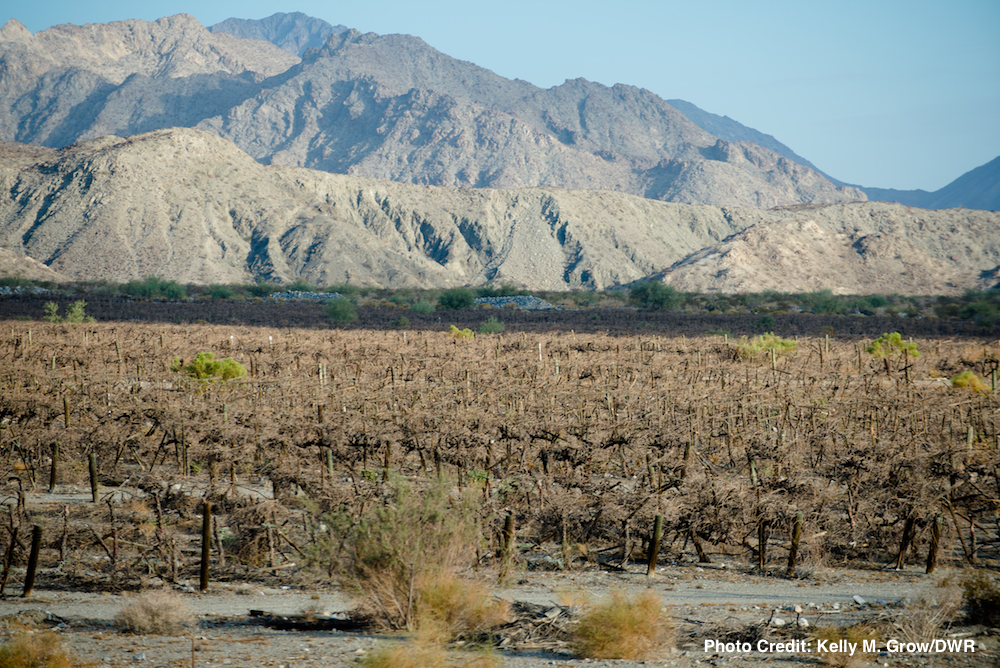November 13, 2017 | Union of Concerned Scientists | News

While hundreds of local agencies across California draft their plans to ensure the sustainability of groundwater basins, water experts say in a white paper released today that these state-mandated plans need to incorporate climate change impacts to be sustainable. The paper is intended to serve as a resource to help agencies do just that. The white paper was published by the Union of Concerned Scientists (UCS) and Stanford University’s Water in the West program.
"Many water managers are not trained in the climate science needed to understand how best to estimate the future impacts of climate change on their water resources," said Geeta Persad, Ph.D., post-doctoral scientist at the Carnegie Institution for Science at Stanford and co-author." Yet the law requires them to incorporate climate change into their plans, which is extremely difficult to do on the scale of a groundwater basin, even with more funding and expertise. This white paper aims to help them navigate the process of incorporating climate change projections appropriately," she said.
Researchers analyzed two dozen local plans submitted to the state earlier this year. They found nearly half of these plans did not include a quantitative analysis of climate change, though the state requires them to do so.
The paper is the culmination of research conducted by the Union of Concerned Scientists and scientists, professors and graduate students at Stanford as part of a Stanford Law School Policy Lab.
“The uncertainty of each basin’s future, as well as the state’s, presents huge challenges for groundwater management in California,” said Tara Moran, Ph.D., research associate at Water in the West and co-author. “However, uncertainty cannot be an excuse for inaction. Scientific and technical tools exist to create plans that cope with an uncertain future,” she said.
Climate models for California predict a shrinking snowpack in the Sierras and a change in the timing and availability of water. The severity of these impacts depends on how quickly and how deeply emission reduction over the next decade are achieved.
There are 515 groundwater basins in California, 127 of which are over-drafted, which means the amount of water pumped out exceeds safe and sustainable levels of extraction.

The Sustainable Groundwater Management Act (SGMA), passed in 2014, mandates that newly formed agencies manage local basins and ensure sustainability of their underground water supply by 2040.
Yet, the authors found many agencies were not using the appropriate climate data in their plans for their management goals. Failure to incorporate the range of future scenarios into the planning process can have severe consequences. For example, one water agency chose to use a moderate climate change scenario in its plan and only projected impacts out to 2025. However, a high climate change scenario for that same region resulted in a threefold decrease in groundwater supply, which would provoke extreme consequences on that agency’s future groundwater recharging efforts.
“A moderate approach may seem prudent, but it is just as likely that future impacts will be much more severe,” said Juliet Christian-Smith, Ph.D., climate scientist and co-author. Christian-Smith was formerly with UCS and is now a senior program officer at the Water Foundation. “Management choices that do not take severe climate change scenarios into account may not be robust enough to protect communities and water users from severe water shortages and other problems,” she said.
The white paper makes a series of recommendations for process improvements that local, state and federal agencies should take to better incorporate climate science in groundwater planning. A key recommendation is that the U.S. Bureau of Reclamation’s Central Valley Project (CVP) and the California Department of Water Resources’ State Water Project (SWP) be consistent in how they use climate science when projecting future water supplies. The CVP and SWP provide significant agricultural and urban water supplies across the state. Local agencies use their projections to inform the groundwater sustainability plans they write.
An additional recommendation is that local groundwater sustainability agencies stress-test their plans against more extreme climate projections and consider both wetter and drier future scenarios rather than relying on historic averages or only moderate scenarios.
“Just as we plan and build infrastructure to be able to withstand a severe earthquake, water managers must plan for groundwater basins to withstand the types of extreme droughts and weather events we are already seeing and will see more of as the climate changes,” said Christian-Smith. “Groundwater sustainability agencies need to make tough choices now to be able to get their communities through the very hard conditions we may face in the future,” she said.
Californians rely on groundwater for about 40 percent of their water supply in average years and much more in dry years.
“Climate science tells us clearly that the future will not look like the past. We need to ensure water managers get and use the climate change information they need and apply climate science correctly when managing our groundwater basins. After all, in the coming decades, the entire state will depend much more on shared underground supplies,” said Adrienne Alvord, Western States director at UCS.

![[Woods Logo]](/sites/default/files/logos/footer-logo-woods.png)
![[Bill Lane Center Logo]](/sites/default/files/logos/footer-logo-billlane.png)